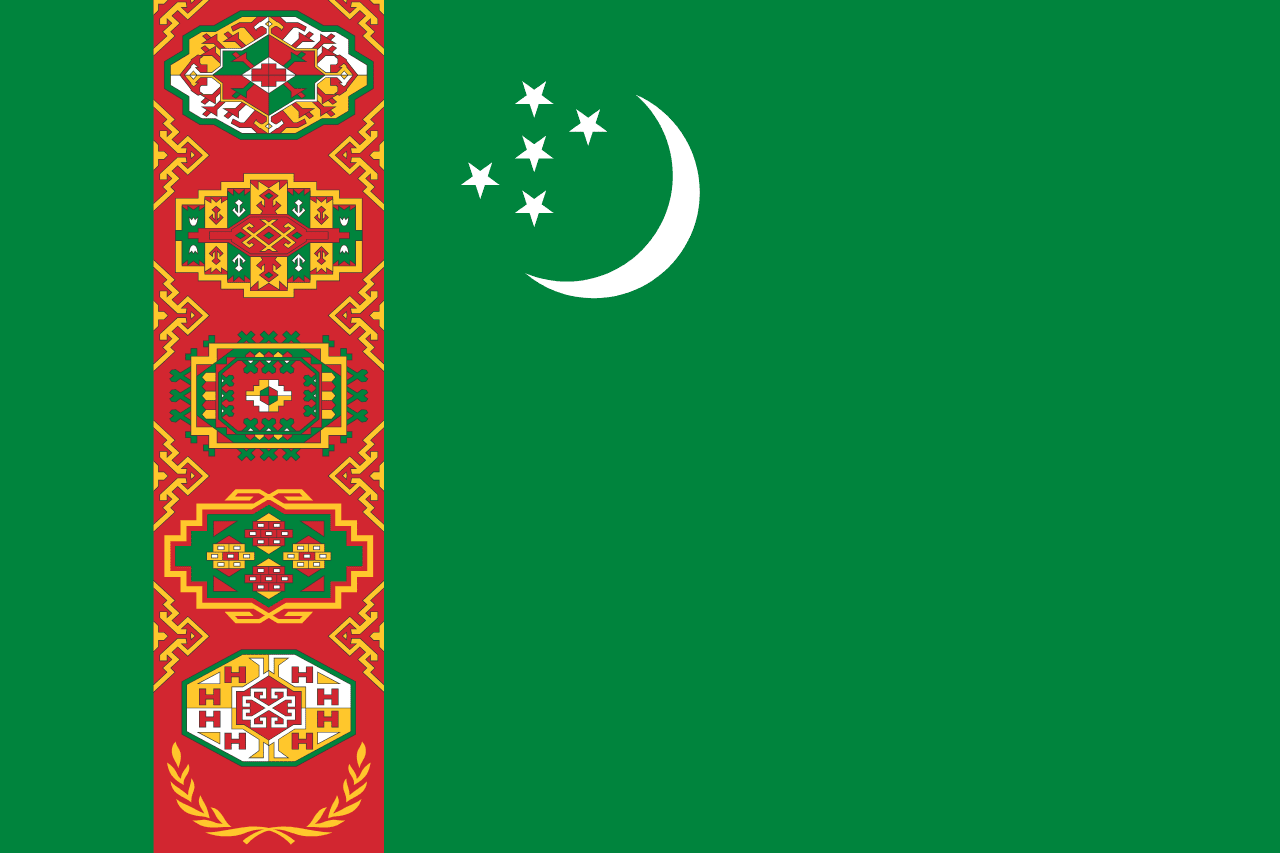The flag of Uganda consists of six equal horizontal stripes of black, yellow, and red, with a white disc containing a grey crowned crane in the center. This vibrant design encapsulates Uganda's rich natural heritage, cultural diversity, and national aspirations.
Uganda information
| National Flag Day | October 9th |
| Sovereign state | Yes |
| Official name | Republic of Uganda |
| Capital | Kampala |
| Population | 43,851,000 |
| Area | 241,038 km² |
| Currency | Ugandan shilling (UGX) |
| Language | English, Swahili |
| Continent | Africa |
| Region | East Africa |
| Subregion | — |
| Borders | Democratic Republic of the Congo, Kenya, Rwanda, South Sudan, Tanzania |
| Timezone | East Africa Time (EAT) UTC+3 |
| Calling code | +256 |
| Top-level domain | .ug |
History of the Ugandan flag
 The current flag of Uganda was adopted on October 9, 1962, coinciding with the country's independence from British rule. It was designed by the Ugandan Minister of Justice at the time, Grace Ibingira. The flag's colors and symbols were carefully chosen to represent various aspects of Uganda's identity and future aspirations.
The current flag of Uganda was adopted on October 9, 1962, coinciding with the country's independence from British rule. It was designed by the Ugandan Minister of Justice at the time, Grace Ibingira. The flag's colors and symbols were carefully chosen to represent various aspects of Uganda's identity and future aspirations.
Symbolism and design of the Ugandan flag
Each element of the Ugandan flag carries specific symbolic meaning:
- The black stripes represent the African people, symbolizing Uganda's place within the African continent.
- The yellow stripes represent Africa's sunshine and the country's sunny climate.
- The red stripes symbolize African brotherhood, representing the common blood that unites all Africans.
- The white disc in the center represents peace and unity among the Ugandan people.
- The grey crowned crane (Balearica regulorum) is Uganda's national symbol and represents the country's rich biodiversity. The crane is known for its gentle nature and was chosen to represent the peaceful nature of the Ugandan people.
Usage and significance of the Ugandan flag
 The flag of Uganda is a powerful symbol of national identity and pride. It is prominently displayed on government buildings, schools, and during national celebrations such as Independence Day (October 9th) and Heroes' Day (June 9th). The flag serves as a unifying emblem, reminding Ugandan citizens of their shared history, cultural diversity, and collective aspirations for the future.
The flag of Uganda is a powerful symbol of national identity and pride. It is prominently displayed on government buildings, schools, and during national celebrations such as Independence Day (October 9th) and Heroes' Day (June 9th). The flag serves as a unifying emblem, reminding Ugandan citizens of their shared history, cultural diversity, and collective aspirations for the future.
In international contexts, the Ugandan flag represents the country at diplomatic events, United Nations gatherings, and global sports competitions. It embodies Uganda's sovereignty and its unique position as an East African nation rich in natural resources and cultural heritage.
Interesting facts about the Ugandan flag
- The grey crowned crane on the flag is also featured on Uganda's coat of arms and is protected by law as a symbol of national importance.
- Uganda is one of the few countries to feature a bird as the central element of its national flag.
- The flag's design has remained unchanged since its adoption in 1962, reflecting its enduring significance to the Ugandan people.
- The colors of the Ugandan flag are shared by many other African nations, symbolizing pan-African unity and solidarity.
- Uganda's national anthem, "Oh Uganda, Land of Beauty," complements the flag's symbolism by celebrating the country's natural beauty and diversity.





